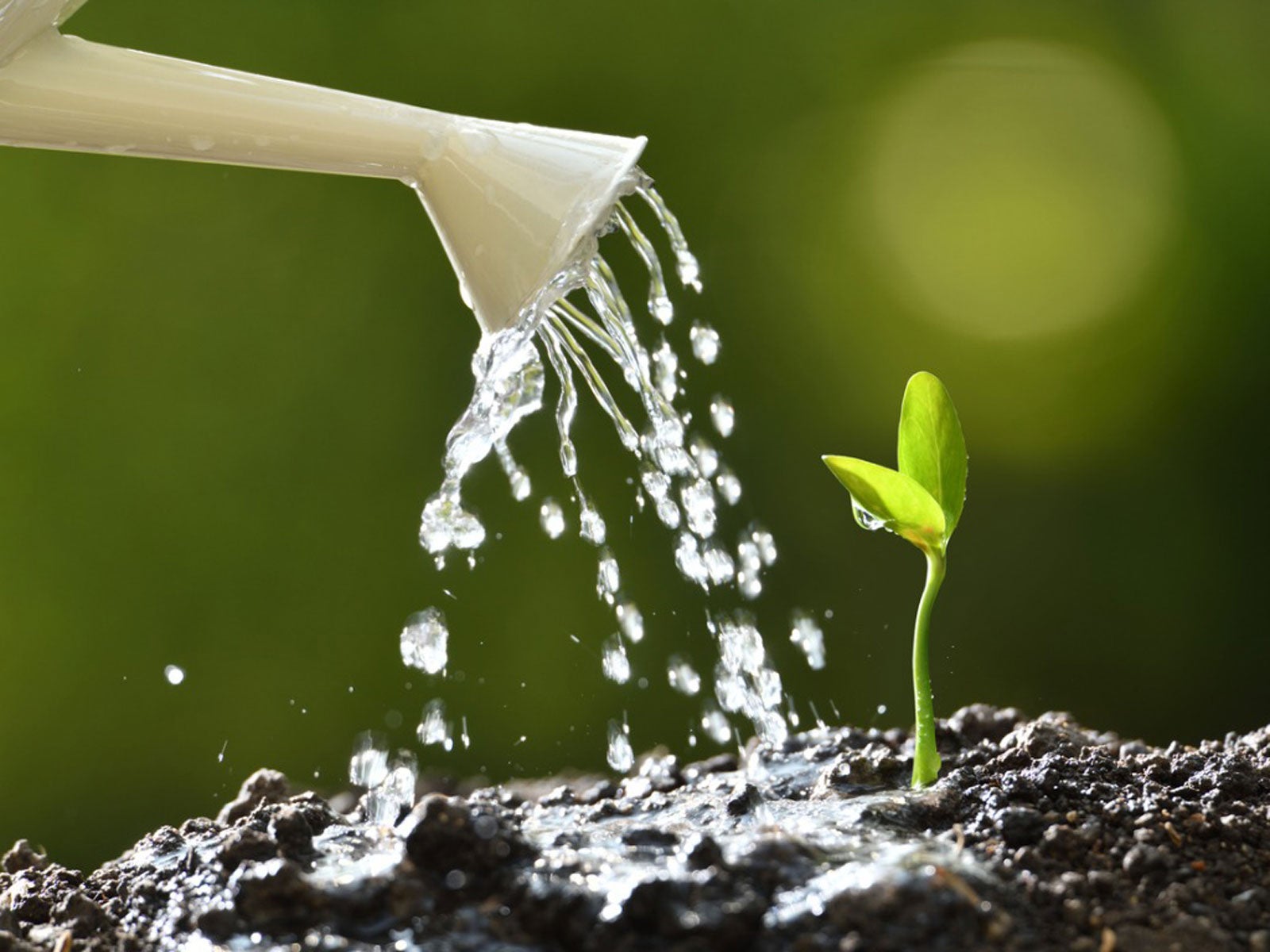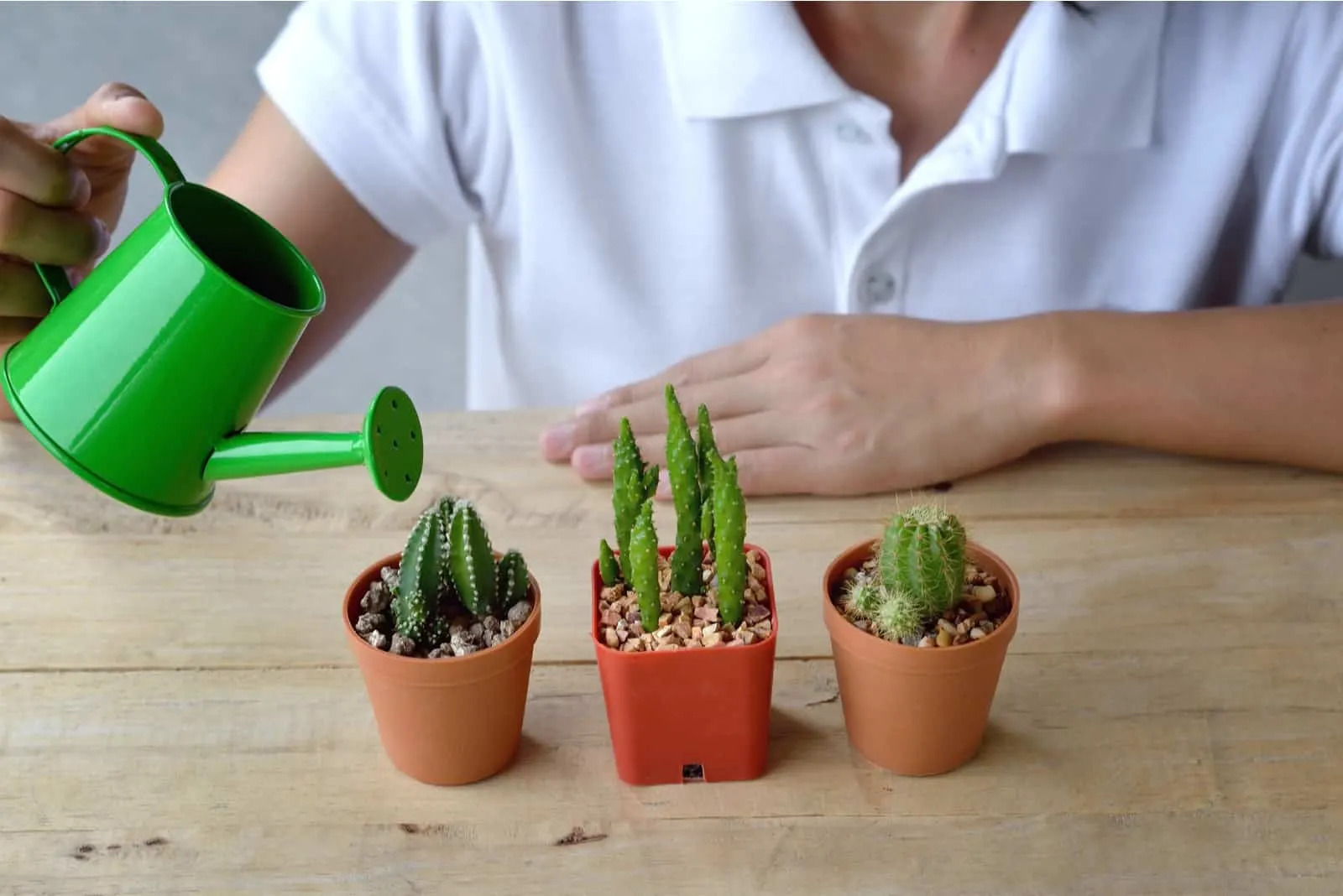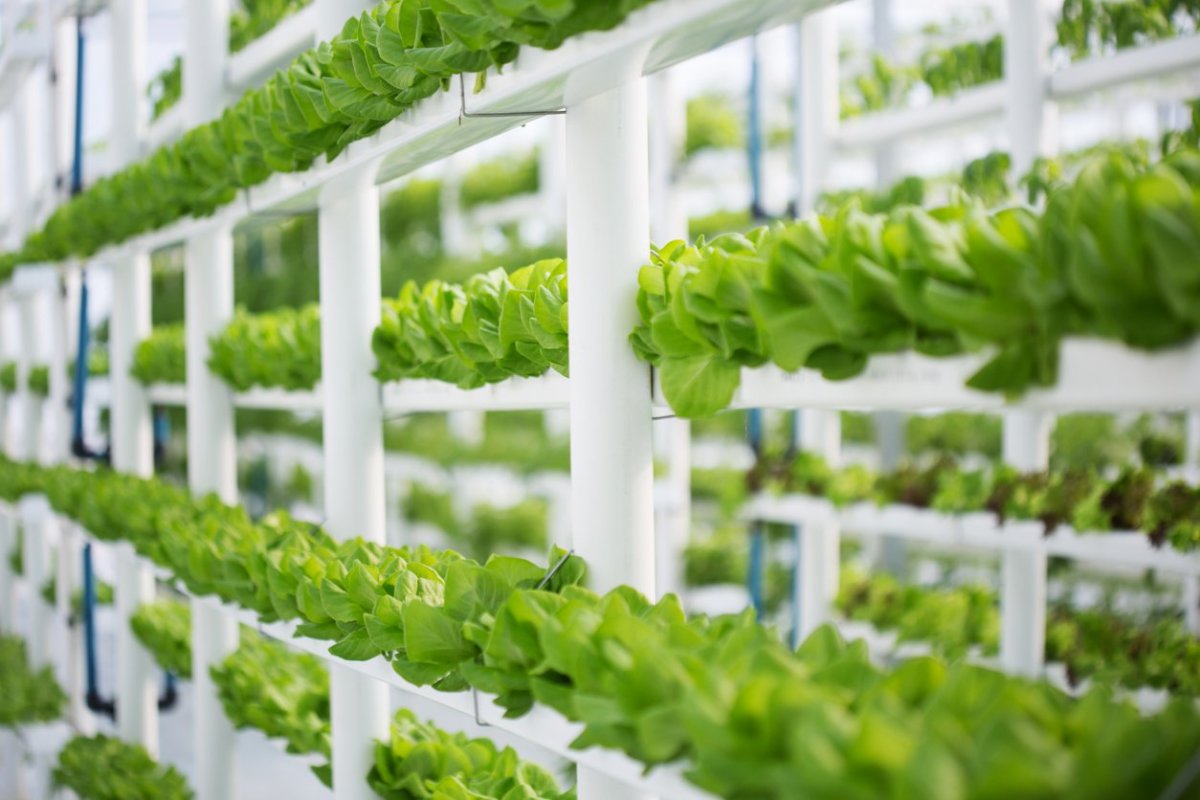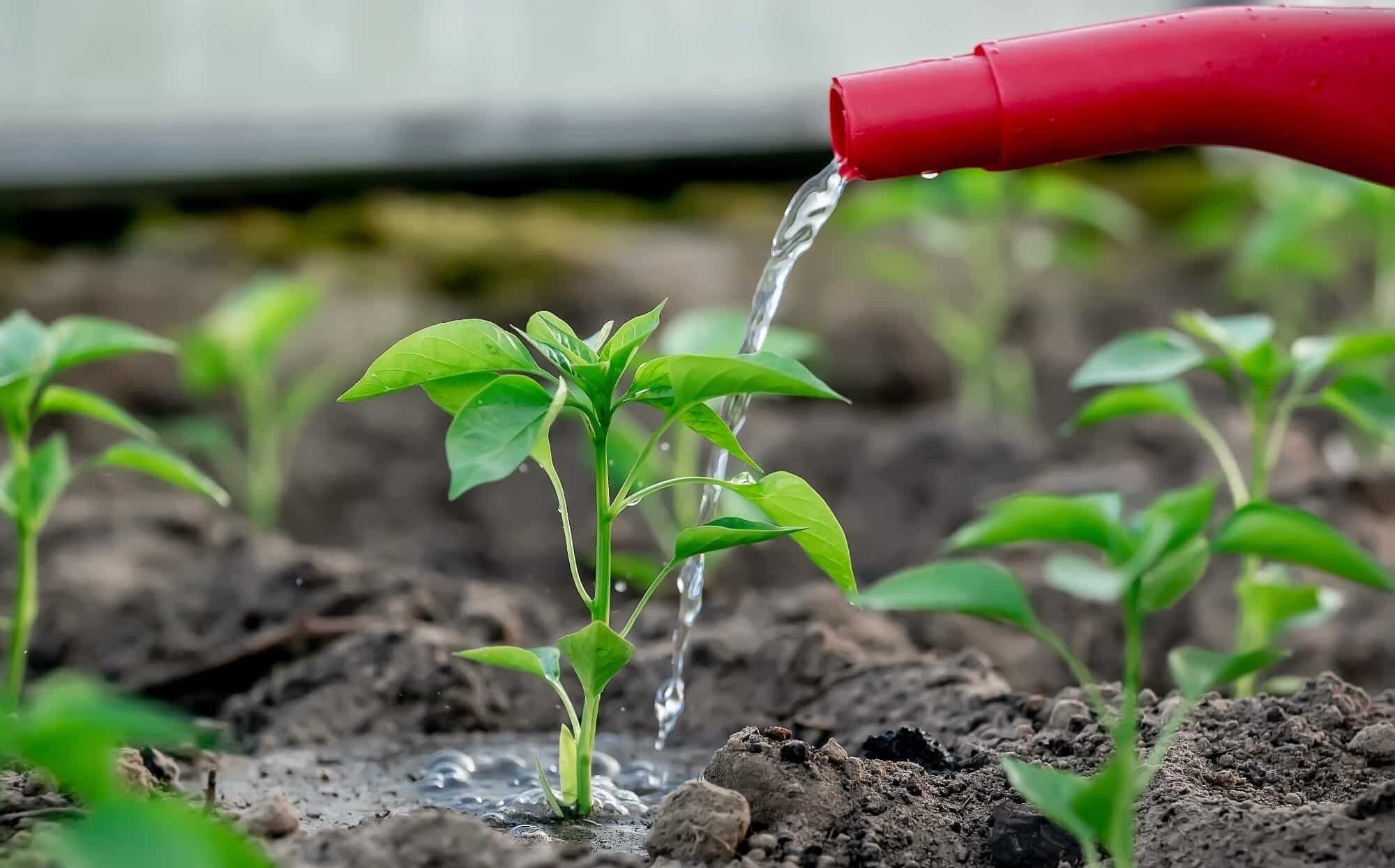Home>Types of Gardening>Edible Gardening>How Often To Water Apple Trees


Edible Gardening
How Often To Water Apple Trees
Published: November 7, 2023
Proper watering is essential for the health of apple trees. Learn how often to water your apple trees and ensure a successful edible gardening experience.
(Many of the links in this article redirect to a specific reviewed product. Your purchase of these products through affiliate links helps to generate commission for Chicagolandgardening.com, at no extra cost. Learn more)
Table of Contents
- Introduction
- Factors to Consider
- The Importance of Proper Watering
- Signs of Underwatering Apple Trees
- Signs of Overwatering Apple Trees
- General Guidelines for Watering Apple Trees
- Watering Schedule for Newly Planted Apple Trees
- Watering Schedule for Established Apple Trees
- Watering Techniques for Apple Trees
- Using Mulch to Conserve Moisture
- Conclusion
Introduction
Welcome to the world of edible gardening! If you have a green thumb and a passion for growing your own food, then edible gardening is the perfect hobby for you. There’s nothing quite like the satisfaction of harvesting your own fresh produce, straight from your own backyard.
One of the most popular and rewarding aspects of edible gardening is growing fruit trees. And if you’re a fan of sweet and juicy apples, then apple trees are a must-have in your garden. But as any experienced gardener knows, growing healthy apple trees requires proper care and attention, including knowing how often to water them.
Watering is a crucial aspect of apple tree care, as it directly impacts the tree’s growth, health, and productivity. Too little water can lead to stunted growth and poor fruit quality, while overwatering can suffocate the roots and promote disease. Therefore, finding the right balance is essential to ensure optimal growth and a bountiful harvest.
In this article, we will explore the factors to consider when determining how often to water your apple trees. We’ll discuss the signs of both underwatering and overwatering, and provide general guidelines and watering schedules for both newly planted and established apple trees. Additionally, we’ll delve into different watering techniques and the benefits of using mulch to conserve moisture.
So, whether you’re a beginner in edible gardening or an experienced enthusiast looking to improve your apple tree care, let’s dive into the world of watering apple trees and discover the secrets to growing healthy and delicious apples.
Factors to Consider
When determining how often to water your apple trees, there are several factors you need to take into consideration. These factors will help you create an ideal watering routine that caters to the specific needs of your apple trees.
1. Climate: The climate in your region plays a crucial role in determining the watering needs of your apple trees. Hot and arid climates will require more frequent watering, while cooler and humid climates may require less frequent watering.
2. Soil Type: Different soil types have varying water-holding capacities. Sandy soils tend to drain quickly and require more frequent watering, while clay soils retain moisture for longer periods and may require less frequent watering.
3. Tree Age: The age of your apple trees also influences their watering needs. Newly planted trees require more frequent watering to establish their root systems, while mature trees have deeper roots and can tolerate longer periods between watering.
4. Rainfall: The amount of rainfall in your area can impact the need for supplemental watering. During periods of heavy rainfall, you may need to adjust your watering schedule accordingly to avoid overwatering.
5. Tree Health: The overall health of your apple trees can affect their water requirements. Diseased or stressed trees may have compromised root systems, making them more susceptible to water stress. In such cases, you may need to provide additional irrigation to support their recovery.
By considering these factors, you can tailor your watering routine to meet the specific needs of your apple trees. Adjusting your watering schedule based on these factors will help ensure that your apple trees receive the right amount of water, promoting healthy growth and abundant fruit production.
The Importance of Proper Watering
Proper watering is essential for the health and vitality of your apple trees. It is one of the fundamental aspects of maintaining their overall well-being and ensuring a bountiful harvest. Here are a few reasons why proper watering is so important:
1. Nutrient Absorption: Water serves as a carrier for essential nutrients, allowing the apple tree’s root system to absorb and distribute these nutrients throughout the plant. Without adequate water, the tree may struggle to access the nutrients it needs, leading to nutrient deficiencies and poor growth.
2. Photosynthesis: Water is a vital component of photosynthesis, the process by which plants convert sunlight into energy. Sufficient water supply enables the apple tree to carry out efficient photosynthesis, resulting in healthy leaf development and productive fruiting.
3. Transpiration: Transpiration is the process by which plants release water vapor through their leaves. This process helps cool the tree during hot weather and transports nutrients upward from the roots to the rest of the plant. Proper watering ensures an adequate water supply for transpiration to occur, maintaining the tree’s physiological functions.
4. Root Development: Regular watering encourages deep root growth in apple trees. Deep roots help anchor the tree in the soil and provide access to water and nutrients that may not be available near the surface. This strengthens the tree’s stability and resilience, especially during periods of drought or strong winds.
5. Fruit Production: Consistent and proper watering is crucial for the development and sizing of apples. Dry conditions can lead to smaller and less flavorful fruits, while adequate water supply supports fruit enlargement and juiciness.
By understanding the importance of proper watering, you can prioritize this aspect of apple tree care to promote their overall health, development, and fruiting potential. Remember, providing the right amount of water at the right time is key to ensuring the success of your edible garden and enjoying the bountiful rewards of your apple trees.
Signs of Underwatering Apple Trees
Underwatering can have detrimental effects on the health and productivity of apple trees. It is important to be able to recognize the signs of underwatering so that you can take appropriate measures to restore adequate moisture levels. Here are some common signs to look out for:
1. Wilting Leaves: One of the first signs of underwatering is wilting leaves. The leaves may appear droopy and lackluster, and the overall canopy of the tree may appear less vibrant.
2. Leaf Curling: In response to water stress, apple tree leaves may start to curl or become crispy at the edges. This is the tree’s way of conserving moisture by reducing the surface area exposed to the sun.
3. Yellowing or Browning Leaves: Insufficient water supply can cause the leaves to turn yellow or develop brown patches. This is a clear indication that the tree is experiencing water stress and is unable to carry out essential metabolic processes effectively.
4. Dry and Cracked Soil: When you dig around the base of the tree, you may find that the soil is dry and cracked. This indicates a lack of moisture, as water has not penetrated deep enough to reach the tree’s root system.
5. Stunted Growth: Underwatered apple trees often exhibit slow or stunted growth. If you notice little to no new growth in your tree or overall reduced vigor, it may be a sign that it is not receiving enough water to support its developmental needs.
6. Small or Deformed Fruits: Lack of water can result in smaller, underdeveloped, or deformed fruits. The tree may also drop immature fruit prematurely as a survival mechanism to conserve water and resources.
If you observe any of these signs, it is crucial to take immediate action to address the watering needs of your apple tree. Adjust your watering schedule, increase the amount of water provided, or implement strategies to retain moisture in the soil, such as mulching.
Remember, keeping your apple trees adequately watered is essential for their health and productivity. By paying attention to these signs and providing the necessary water, you can help your apple trees thrive and enjoy a fruitful harvest.
Signs of Overwatering Apple Trees
While proper watering is crucial for the health of apple trees, overwatering can be just as harmful as underwatering. Knowing the signs of overwatering will help you prevent waterlogged conditions and maintain optimal moisture levels. Here are some common signs to watch out for:
1. Yellowing Leaves: Overwatered apple trees often exhibit yellowing leaves. This condition, known as chlorosis, occurs when the excess water limits the tree’s ability to take up necessary nutrients, leading to nutrient deficiencies.
2. Leaf Drop: If your apple tree drops leaves excessively, especially outside of the normal leaf-shedding period, it may be a sign of overwatering. The excess moisture can lead to root damage and hinder the tree’s ability to take up water effectively.
3. Mold or Fungal Growth: Overly wet conditions create an ideal environment for mold and fungi to thrive. Look for signs of powdery mildew, black spot, or other fungal diseases on the leaves and fruit. These diseases can weaken the tree and affect its overall health.
4. Root Rot: One of the most serious consequences of overwatering is root rot. If you notice a foul odor or mushy texture when inspecting the roots, it is a strong indication that the tree has been overwatered, resulting in the decay of the root system.
5. Slow Growth or Decline: Overwatering restricts the oxygen availability in the soil, suffocating the roots. This can result in stunted growth, reduced vigor, and an overall decline in the health of the apple tree.
6. Excessively Wet Soil: When you dig around the base of the tree, you may find the soil to be consistently wet or waterlogged. The excess moisture can prevent air circulation and lead to root suffocation.
If you observe any of these signs, it is crucial to address the overwatering immediately. Allow the soil to dry out between waterings and adjust your watering schedule accordingly. Ensure proper drainage by amending the soil or redirecting water away from the tree’s roots.
Remember, finding the right balance is key to maintaining the health of your apple trees. By being attentive to the signs of overwatering and taking prompt action, you can ensure they receive the appropriate amount of water to thrive and bear abundant, healthy fruit.
General Guidelines for Watering Apple Trees
Watering apple trees properly is essential for their overall health and productivity. While the exact watering requirements vary depending on factors such as climate, soil type, and tree age, there are some general guidelines you can follow to ensure optimal watering. Here are some tips to keep in mind:
1. Deep Watering: When watering apple trees, provide a deep soaking rather than frequent shallow watering. This encourages the development of deep roots, which helps the tree withstand drought conditions and promotes better nutrient absorption.
2. Water Infrequently: Rather than watering daily, it is generally better to water apple trees less frequently but deeply. This allows the soil to dry out between waterings, preventing waterlogged conditions that can lead to root rot.
3. Time Watering Appropriately: Water your apple trees in the early morning or late afternoon to avoid excessive water loss due to evaporation during the heat of the day. This helps ensure that the tree receives the maximum benefit from each watering.
4. Adjust for Weather Conditions: Modify your watering schedule based on weather conditions. During periods of intense heat or drought, you may need to increase the frequency and duration of watering to compensate for increased water evaporation.
5. Monitor Soil Moisture: Regularly check the moisture level of the soil beneath the tree. Insert a finger or a soil moisture meter to determine if the soil is dry or moist. This will help you gauge when it’s time to water and avoid over or underwatering.
6. Provide Adequate Drainage: Ensure that the soil around your apple trees has proper drainage to avoid waterlogging. If the soil tends to retain excessive moisture, you can consider incorporating organic matter or using raised beds to improve drainage.
7. Adjust for Tree Age: Young apple trees require more frequent watering compared to established ones. Newly planted trees need daily or every other day watering until their root systems become established. Mature trees with well-developed root systems can tolerate longer periods between waterings.
Remember, these guidelines serve as a starting point, and it’s important to adapt them to the specific needs of your apple trees. Regular observation and adjustment based on your tree’s response to watering will help you find the perfect balance and ensure their health and productivity over time.
Watering Schedule for Newly Planted Apple Trees
Newly planted apple trees require special attention to establish healthy root systems and ensure their long-term growth and productivity. Here is a general watering schedule to follow for newly planted apple trees:
First Week: Immediately after planting the apple tree, give it a thorough watering to help settle the soil and eliminate air pockets around the roots. Provide enough water to moisten the entire root ball.
First Month: During the first month, water the newly planted apple tree every 2 to 3 days. Aim to provide around 1 inch of water per week, including rainfall. Monitor the soil moisture and adjust the frequency as needed based on weather conditions. Ensure that the soil remains consistently moist but not waterlogged.
First Season: Throughout the first growing season, continue to water the apple tree regularly to promote root establishment. Gradually extend the interval between waterings as the tree becomes more established and starts to develop deeper roots. Aim for deep soakings every 1 to 2 weeks, providing enough water to penetrate the root zone.
Monitoring: Monitor the soil moisture regularly by inserting a finger or a soil moisture probe into the soil. If the top 2 to 3 inches of soil feel dry, it’s time to water. Avoid allowing the soil to dry out completely, as it can stress the young tree’s root system.
Rainfall Considerations: Take into account any rainfall received in your area when determining the watering schedule. If there is significant rainfall, adjust the frequency of watering accordingly to avoid overwatering.
Mulching: Apply a layer of organic mulch around the base of the tree, leaving a small gap around the trunk. Mulching helps conserve moisture, suppress weeds, and maintain a more even soil temperature. However, be cautious not to pile mulch directly against the trunk, as it can lead to rot and other issues.
It’s crucial to remember that these guidelines are general recommendations. Factors like weather conditions, soil type, and tree size can influence the watering needs of newly planted apple trees. Regularly assess the soil moisture and adjust your watering schedule accordingly to ensure the optimal growth and establishment of your apple tree.
Watering Schedule for Established Apple Trees
Established apple trees have developed a strong root system and require a slightly different watering schedule compared to newly planted trees. Here are some general guidelines for watering established apple trees:
Spring and Summer: During the active growing season, water your established apple trees deeply every 1 to 2 weeks. Aim to provide 1 to 1.5 inches of water per week, including rainfall. This allows the water to penetrate the root zone and encourages the tree to develop deep, strong roots.
Monitor Soil Moisture: Regularly monitor the moisture level of the soil around the tree. Insert a finger or a soil moisture probe into the soil to check for moisture content. If the top 2 to 3 inches of soil feel dry, it’s time to water.
Adjust for Weather Conditions: Adjust the frequency and amount of watering based on weather conditions. During periods of high heat or drought, you may need to increase the frequency of watering to compensate for increased water evaporation. Conversely, reduce watering during periods of heavy rainfall or cooler temperatures.
Watering Depth: When watering, aim to provide deep soakings that penetrate at least 1 foot into the soil. This encourages the roots to grow deeper, making them more resilient to drought conditions.
Water Zone: Focus on watering the root zone of the apple tree, which extends outwards from the trunk to the drip line (the outermost edge of the tree’s canopy). This is where the majority of the active roots are located and where water is most beneficial to the tree.
Watering Techniques: Use slow, deep watering techniques such as drip irrigation or a soaker hose. This allows water to be efficiently delivered to the root zone, minimizing runoff and optimizing water absorption by the roots.
Mulching: Apply a layer of organic mulch around the base of the tree, extending it out to the drip line. Mulching helps retain soil moisture, suppress weeds, and regulate soil temperature. Keep the mulch a few inches away from the trunk to avoid moisture buildup and potential rot.
Winter Dormancy: Once winter arrives and the tree enters dormancy, reduce watering but do not let the soil completely dry out. Occasional deep watering during dry periods helps ensure adequate hydration for the tree during the dormant season.
Remember, these guidelines serve as a starting point, and it’s important to observe your specific tree’s watering needs. Adjust the watering schedule based on the tree’s response, weather patterns, and the overall moisture level of the soil. Consistent, properly timed watering will help maintain the health and productivity of your established apple trees.
Watering Techniques for Apple Trees
Proper watering techniques are crucial for ensuring that your apple trees receive the right amount of water and moisture reaches the root zone effectively. Here are some effective watering techniques to consider when watering your apple trees:
1. Drip Irrigation: Drip irrigation is an efficient watering method that delivers water directly to the root zone of the apple tree. It involves the use of emitters or drip lines placed near the base of the tree, allowing a slow and steady release of water. This technique minimizes water waste and promotes deep root growth.
2. Soaker Hoses: Soaker hoses are another effective watering tool for apple trees. They release water slowly, allowing it to seep into the soil directly around the tree’s roots. Like drip irrigation, soaker hoses help conserve water and reduce evaporation.
3. Basin or Ring Irrigation: Creating a shallow basin or ring around the base of the apple tree is a simple and effective way to water. Fill the basin with water, allowing it to slowly penetrate the soil and hydrate the roots. This technique encourages the roots to grow deeper and prevents water runoff.
4. Sprinklers: Sprinklers can be used for watering apple trees, but they may not be the most efficient method. If using sprinklers, target the water directly at the root zone and avoid excessive watering of the leaves. Water in the early morning or late afternoon to minimize water loss due to evaporation.
5. Watering Bags: Watering bags or tree watering stakes can be a convenient option, especially for newly planted apple trees. These bags slowly release water directly to the root zone over an extended period, ensuring consistent moisture supply. They also eliminate the need for frequent manual watering.
6. Hand Watering: For small or isolated apple trees, hand watering can be an effective technique. Use a watering can or hose with a gentle spray nozzle to water the tree’s base and surrounding soil. Ensure thorough coverage without creating excessive runoff.
Remember, regardless of the watering technique you choose, it’s important to water deeply and evenly, ensuring that the entire root zone receives moisture. Regularly monitor the moisture levels in the soil and adjust the watering frequency as necessary based on weather conditions.
Consistency and adequate moisture are key when it comes to keeping apple trees healthy and thriving. By employing these watering techniques and adjusting them to suit your specific apple trees’ needs, you can ensure that they receive the hydration they need to produce delicious and abundant fruit.
Using Mulch to Conserve Moisture
Mulching is a valuable practice that can greatly benefit apple trees by conserving moisture and improving overall growing conditions. By applying a layer of organic mulch around the base of your apple trees, you can enhance water retention in the soil and provide numerous other advantages. Here’s why using mulch is advantageous and how to do it effectively:
Benefits of Mulching:
1. Moisture Retention: Mulch acts as a natural barrier, reducing evaporation and helping to retain moisture in the soil. This is particularly beneficial during hot and dry periods when water loss can be rapid, ensuring a more consistent moisture level for the tree’s roots.
2. Weed Suppression: Mulch forms a protective layer over the soil, inhibiting weed growth and competition for water and nutrients. This reduces the need for frequent weeding and conserves soil moisture for the apple tree.
3. Temperature Regulation: Mulch helps regulate soil temperature by insulating the soil against extreme heat or cold. This can minimize stress on the tree’s roots and provide a more stable environment for growth.
4. Soil Structure Improvement: Over time, organic mulch breaks down and contributes to the improvement of soil structure. It promotes microbial activity, enhances soil fertility, and increases the water-holding capacity of the soil.
5. Disease Prevention: Mulch can act as a protective barrier, reducing the chances of soil-borne diseases splashing onto the tree’s lower leaves and fruit during rainfall or irrigation.
Effective Mulching Tips:
1. Mulch Material: Use organic materials like wood chips, shredded bark, straw, or compost as mulch. Avoid using materials that can decompose too slowly or create an unfavorable environment for the tree’s roots, such as plastic mulch.
2. Mulch Depth: Apply a layer of mulch around 2 to 4 inches deep. Avoid placing mulch directly against the trunk of the tree, as this can create excess moisture and lead to rot or pest issues. Leave a small gap between the trunk and the mulch to promote airflow.
3. Mulch Area: Extend the mulch outward in a wide circle around the tree, reaching the drip line. This covers a larger area of the root zone and maximizes the benefits of moisture retention and weed suppression.
4. Mulch Maintenance: Periodically inspect the mulch and replenish it as needed. Over time, organic mulch can decompose and settle. Adding more mulch will maintain its effectiveness and provide ongoing benefits.
Mulching is a simple yet effective practice that can significantly improve the growing conditions for your apple trees. By conserving moisture, suppressing weeds, and enhancing soil health, mulch creates an environment that supports the growth and productivity of your apple trees.
Conclusion
Proper watering is essential for the health and productivity of your apple trees. By understanding the factors that influence watering requirements and recognizing the signs of both underwatering and overwatering, you can ensure that your apple trees receive just the right amount of moisture they need to thrive.
General guidelines for watering, such as deep watering, adjusting for weather conditions, and monitoring soil moisture, provide a solid foundation for maintaining the health of both newly planted and established apple trees. Additionally, employing effective watering techniques like drip irrigation, soaker hoses, or hand watering can optimize water usage and ensure efficient delivery to the root zone.
Using mulch to conserve moisture offers several benefits, including improved water retention, weed suppression, temperature regulation, and soil structure enhancement. Proper mulching techniques help create a favorable environment for apple tree growth while reducing the risk of diseases and conserving water resources.
Remember that every apple tree is unique, and it’s essential to observe your specific trees’ response to watering and adapt the schedule accordingly. Factors such as climate, soil type, tree age, and tree health should be considered when creating a watering routine.
By consistently providing the right amount of water at the right time and monitoring the needs of your apple trees, you can ensure their optimal health, growth, and productivity. With dedication and care, you’ll soon enjoy the reward of juicy, delicious apples straight from your very own garden.







